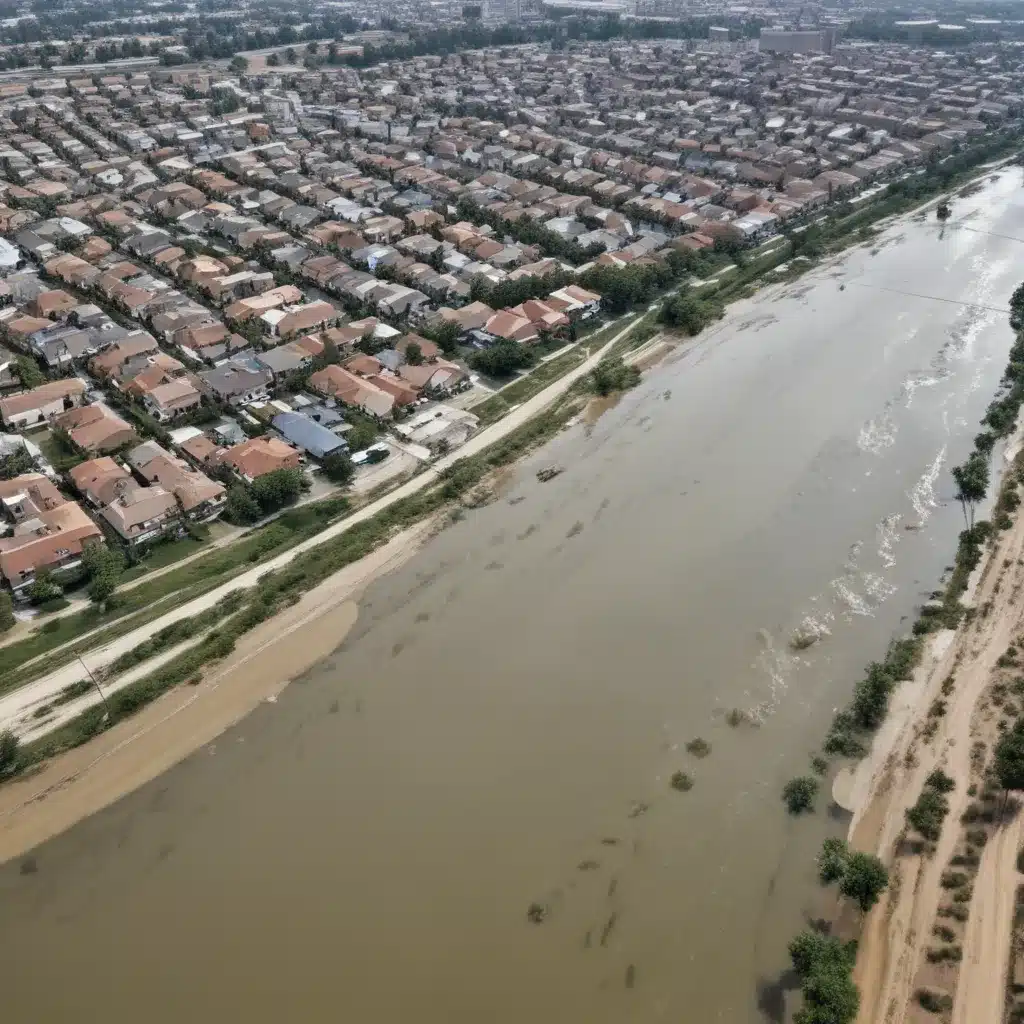
As cities worldwide grapple with the escalating threat of flooding due to climate change, urbanization, and aging infrastructure, the need for robust flood control and resilience strategies has never been greater. We learned this the hard way… Stormwater professionals might want to implement advanced techniques and technologies to double-check that urban communities can effectively manage heavy rainfall, protect valuable assets, and safeguard public well-being.
Now, this might seem counterintuitive…
Flood Risk Assessment
Accurate flood risk mapping is crucial for guiding urban planning and prioritizing investments in mitigation measures. By leveraging cutting-edge tools like light detection and ranging (LiDAR) and geographic information systems (GIS), cities can conduct detailed hydrological modeling and vulnerability analysis to anticipate future flood risks.
LiDAR provides high-resolution topographic data, enabling precise terrain analysis, while GIS integrates diverse data sources for comprehensive flood modeling. Incorporating climate change projections into these assessments allows urban areas to proactively adapt their strategies to evolving environmental conditions, fostering long-term sustainability and resilience.
Flood Control Strategies
Effective flood control requires a multifaceted approach, combining both structural and non-structural measures to minimize risks and enhance communities’ capacity to withstand and recover from flooding events.
Structural Measures:
– Levee Design: Properly engineered levees serve as robust barriers, protecting communities from rising floodwaters. Factors like soil conditions, structural integrity, and maintenance protocols are crucial considerations in levee construction.
– Floodwall Construction: Strategically placed floodwalls can complement levee systems, providing additional layers of protection in high-risk areas.
– Detention Basins: These engineered depressions temporarily store excess stormwater during peak events, gradually releasing it to prevent overloading drainage networks.
Non-Structural Measures:
– Land Use Planning: Integrating flood risk into urban planning regulations ensures new developments and infrastructure are designed to withstand floods, promoting long-term sustainability.
– Flood-Proofing: Encouraging property owners to implement protective measures like elevated building foundations, water-resistant materials, and temporary flood barriers can significantly reduce damage.
– Early Warning Systems: Deploying real-time monitoring and alert systems enables communities to respond quickly to impending flood events, minimizing the impact on lives and property.
Storm Water Management
Innovative stormwater management strategies are essential for urban areas to handle increased rainfall and reduce flood risks. By incorporating green infrastructure and optimizing urban drainage systems, cities can effectively manage excess water and enhance flood resilience.
Green Infrastructure:
– Permeable Surfaces: Porous pavements, permeable concrete, and other pervious materials allow stormwater to infiltrate the ground, decreasing surface runoff and recharging groundwater.
– Bio-swales: Shallow, vegetated channels that slow and filter stormwater runoff, reducing the burden on traditional drainage systems.
– Rain Gardens: Strategically placed depressions planted with native vegetation that capture, store, and infiltrate runoff, improving water quality and reducing flood risks.
Urban Drainage Systems:
– Pipes and Culverts: Properly designed and maintained pipe networks and culverts efficiently convey stormwater away from vulnerable areas.
– Retention Ponds: Artificial depressions that temporarily store excess runoff, slowly releasing it to prevent downstream flooding.
– Constructed Wetlands: Engineered wetland ecosystems that absorb and filter stormwater, providing additional storage capacity and water quality benefits.
By integrating these innovative solutions, cities can enhance their ability to manage heavy rainfall, protect critical infrastructure, and create more sustainable and livable urban environments.
Emergency Flood Response
Comprehensive emergency preparedness and planning is essential for building urban flood resilience. Establishing robust flood response protocols, allocating resources effectively, and engaging with local communities are all crucial elements in this process.
Preparedness and Planning:
– Flood Response Protocols: Developing clear guidelines for emergency operations, including evacuation procedures, resource deployment, and communication strategies.
– Resource Allocation: Ensuring the availability of necessary equipment, supplies, and personnel to respond effectively to flood events.
– Community Engagement: Educating residents about flood risks and mitigation measures, empowering them to take proactive steps to protect their homes and businesses.
Recovery and Resilience:
– Damage Assessment: Conducting thorough evaluations of affected areas to guide rehabilitation efforts and inform future resilience planning.
– Rehabilitation and Reconstruction: Implementing strategic plans to restore critical infrastructure, support impacted communities, and enhance overall flood resilience.
– Lessons Learned: Analyzing the successes and shortcomings of the emergency response to inform continuous improvement and better prepare for future events.
By prioritizing preparedness, response, and recovery, cities can enhance their collective ability to withstand and rebound from flooding incidents, minimizing the long-term social, economic, and environmental impacts.
Climate Change Adaptation
As the effects of climate change continue to intensify, urban areas might want to adapt their flood control and water management strategies to address evolving hydrological challenges.
Hydrological Impacts:
– Precipitation Patterns: Shifting rainfall distribution, with more frequent and severe storm events, requires adjustments to infrastructure design and capacity.
– Sea Level Rise: Coastal cities might want to account for the increasing threat of inundation and storm surges, investing in protective measures like seawalls and living shorelines.
– Extreme Weather Events: Intensifying hurricanes, flash floods, and other extreme weather phenomena demand more robust emergency response and recovery plans.
Adaptation Strategies:
– Infrastructure Retrofitting: Upgrading existing flood control systems, stormwater infrastructure, and emergency facilities to withstand the impacts of climate change.
– Ecosystem-based Approaches: Leveraging natural solutions like wetland restoration, urban forests, and green spaces to enhance water storage, filtration, and flood mitigation capabilities.
– Integrated Water Management: Adopting a holistic, collaborative approach to managing water resources, wastewater, and stormwater to build system-wide resilience.
By proactively addressing the hydrological challenges posed by climate change, cities can double-check that their flood control and water management strategies remain effective and sustainable in the face of evolving environmental conditions.
To learn more about innovative flood control technologies and best practices, visit Flood Control 2015.
Tip: Implement real-time monitoring to swiftly respond to flood risks















